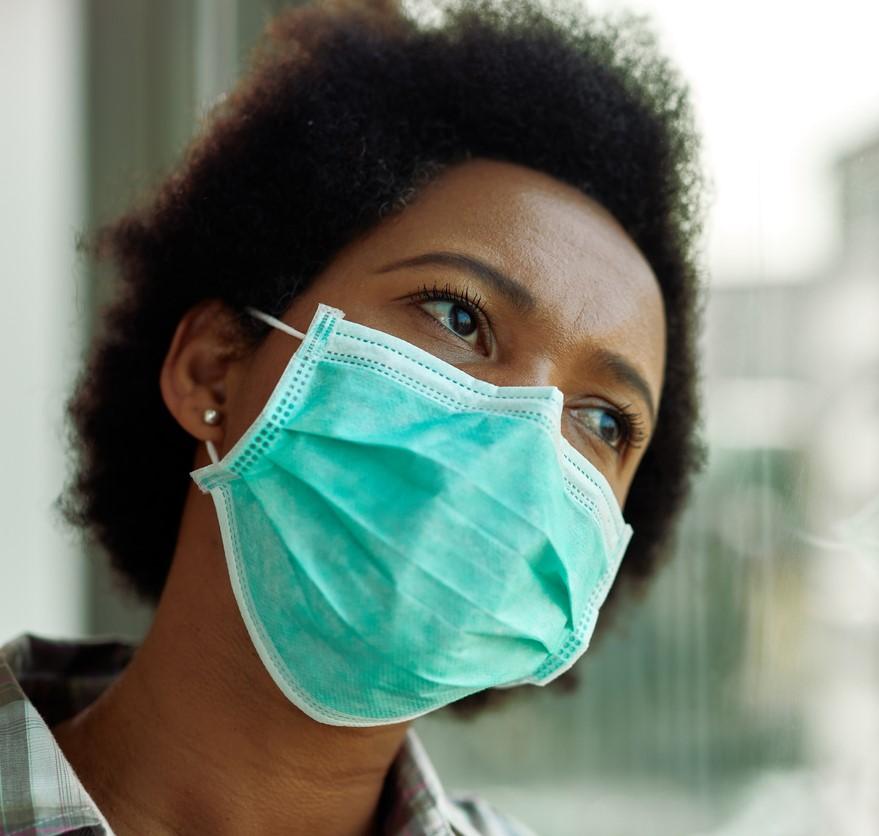Two US studies in JAMA Network Open today detail disparities in COVID-19 deaths in 2020, one showing higher mortality rates among racial minorities, and the other finding fewer infections but more deaths among patients with schizophrenia and other mood disorders.
Native Hawaiians, Pacific Islanders at highest risk
In the first study, Harvard University researchers analyzed race, educational attainment, and COVID-19 death data from 219.1 million Americans 25 years or older in 2020, before the emergence of the Delta (B1617.2) variant. Average age was 51.3 years, and 51.7% were women.
Of the 219.1 million adults, 376,125 (0.17%) died of COVID-19. Age-adjusted death rates ranged from 54.4 per 100,000 people among Asian women with some college to 699.0 among Native Hawaiian and other Pacific Islander men with no more than a high school education.
Overall, age-adjusted death rates were highest among those with the lowest educational attainment (208.1 per 100,000 population). Older White men with no more than a high school education died of COVID-19 at a rate of 199.7 per 100,000, comparable to rates among college-educated Black, American Indian and Alaska Native, and Latino men (199.4, 196.3, and 198.6 per 100,000, respectively). Native Hawaiian and other Pacific Islander men with a college education died at a rate of 259.6 per 100,000.
By race, death rates were highest among American Indians and Alaska Natives (334.5 per 100,000) and Native Hawaiians and other Pacific Islanders (356.9 per 100,000). Death rates were lowest among White people (116.4 per 100,000) and Asians (110.9 per 100,000). Racial minority women, except Asian women, died at higher rates than White men in the same age-group.
Compared with White people, nearly all racial groups had higher COVID-19 death rates (cumulative mortality rate ratio [MRR], greater than 1.0). The only groups with lower death rates than White people were older Asian women of any education level, younger Asian women with a high school education or less, older Asian men with a college education, and older, college-educated Native Hawaiian and other Pacific Islander men.
Young Black women at quadruple risk of death
COVID-19 deaths were relatively rare among younger adults, but the MRRs measuring racial inequity were greatest in this age-group (range, 0.8 for Asian women with a high school education or less to 11.1 for Native Hawaiian and other Pacific Islander men with some college).
Comparison within educational attainment categories showed the same results, with an MRR reduction of 17% for education-stratified estimates compared with unstratified estimates, using White people as the reference.
Younger Black women died at a 4.2 times higher rate than White women the same age. Within education categories, the MRR for younger Black women (compared with younger White women of the same education level) ranged from 3.2 for those with a high school education or less to 5.4 for college graduates.
"If all groups had experienced the same mortality rates as college-educated non-Hispanic White individuals, there would have been 48% fewer COVID-19 deaths among adults aged 25 years or older overall, including 71% fewer deaths among racial and ethnic minority populations and 89% fewer deaths among racial and ethnic minority populations aged 25 to 64 years," the study authors wrote.
The researchers called for public health officials to consider that socioeconomically similar populations shoulder more than their share of risk factors for SARS-CoV-2 exposure and death (eg, housing, job, baseline health status).
"This study suggests that a majority of deaths among racial and ethnic minority populations could have been averted had all groups experienced the same mortality rate as college-educated non-Hispanic White individuals, thus highlighting the importance of eliminating joint racial-socioeconomic health inequities," they wrote.
Patients with schizophrenia 4 times more likely to die
Another study, this one by University of Texas at Houston researchers, examined electronic health record data from 2,535,098 US patients in 2020. Of all patients, 3,350 had schizophrenia, 26,610 had mood disorders, and 18,550 had anxiety disorders. Average age was 44 years, 62% were female, 62.5% were White, and 9.2% were Black.
The authors noted that people with major psychiatric disorders are more likely to have underlying medical conditions tied to poor COVID-19 outcomes.
Patients with schizophrenia and mood disorders tested positive for COVID-19 at significantly lower rates (9.86%) than those with anxiety (11.17%) and the general population (11.91%) (adjusted odds ratio [OR], 1.05). However, patients with schizophrenia were almost four times more likely to die of their infections than the general public (OR, 3.74), regardless of their chronic medical conditions, while those with mood disorders were 2.76 times more likely, and those with anxiety were 2.39 more likely.
Rates of all underlying medical factors such as smoking were higher among those with psychiatric illnesses than the general public, but rates of obesity were 8% to 15% lower among patients with schizophrenia. Female patients were less likely to have COVID-19, as were smokers and those with most underlying conditions except diabetes, which increased the odds by nearly 18%.
The researchers said that lower rates of COVID-19 positivity among patients with major psychiatric disorders may reflect their more limited exposure to the virus because of social isolation.
"This study’s findings suggest the need to foster recognition of pandemic risks on specific groups of patients with psychiatric conditions, and may drive alternative approaches to COVID-19 disease testing and interventions to improve clinical outcomes," they concluded.


















